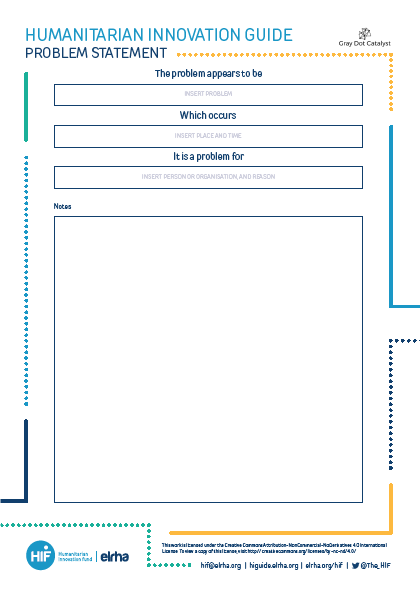If you have identified an opportunity, make sure that you go back and use one or two of the activities and exercises to ensure that there is a real problem that you are addressing. In the end, an opportunity is essentially a response to a problem that mobilises latent capabilities that haven’t yet been exploited for greatest effect.
If you have clearly identified your problem, then it is time to develop a problem statement. This is an articulation of your initial understanding of the problem. As you move through the Recognition stage, you will find that your understanding of the problem area expands and deepens. But articulating the problem statement at this point is a significant step in the overall Recognition process.
